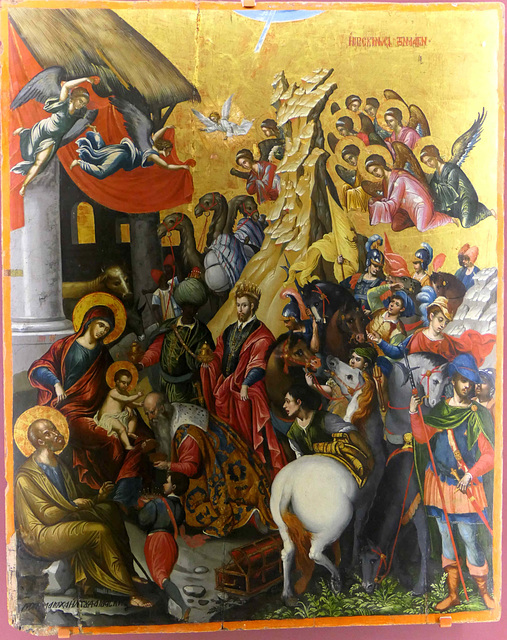Heraklion - Agia Ekaterini
Heraklion - Agia Ekaterini
Heraklion - Agia Ekaterini
Heraklion - Agia Ekaterini
Heraklion - Agia Ekaterini
Heraklion - Evangelismos
Heraklion
Heraklion - Agios Titos
Heraklion - Agios Titos
Heraklion - Agios Titos
Heraklion - Agios Titos
Heraklion - Venetian Loggia
Heraklion - Venetian Loggia
Heraklion - Venetian Loggia
Heraklion - Koules Fortress
Heraklion - Neoria Vechi
Heraklion - Historical Museum of Crete
Heraklion - Historical Museum of Crete
Heraklion - Historical Museum of Crete
Heraklion - Historical Museum of Crete
Heraklion - Historical Museum of Crete
Heraklion - Historical Museum of Crete
Heraklion - Historical Museum of Crete
Heraklion - Agia Ekaterini
Heraklion - Agia Ekaterini
Heraklion - Agios Minas Cathedral
Heraklion - Agios Minas Cathedral
Heraklion - Agios Minas Cathedral
Heraklion - Agios Minas Cathedral
Hannover - Aegidienkirche
Hannover - Aegidienkirche
Hannover - Rathsapotheke
Hannover - Markthalle
Hannover - Marktkirche
Hannover - Marktkirche
Hannover - Marktkirche (PiP)
Hannover - Landesmuseum
Hannover - Landesmuseum
Hannover - Landesmuseum
Hannover - Landesmuseum
Hannover - Landesmuseum
Hannover - Landesmuseum
Hannover - Landesmuseum
Hannover - Landesmuseum
Hannover - Landesmuseum
Location
Lat, Lng:
You can copy the above to your favourite mapping app.
Address: unknown
You can copy the above to your favourite mapping app.
Address: unknown
See also...
Keywords
Authorizations, license
-
Visible by: Everyone -
All rights reserved
-
7 visits
Heraklion - Agia Ekaterini


Crete is the largest and most populous of the Greek islands, is located about 100 km south of the Peloponnese. Crete was the center of Europe's first advanced civilization, the Minoans, from 3000 to 1400 BC. The Minoan civilization was overrun by the Mycenaean civilization from mainland Greece. Crete was later ruled by Rome, then successively by the Byzantine Empire, Andalusian Arabs, the Byzantine Empire again, the Venetian Republic, and the Ottoman Empire. In 1898 Crete, whose people had for some time wanted to join the Greek state, achieved independence from the Ottomans, formally becoming the Cretan State. Crete became part of Greece in December 1913.
Heraklion is the largest city and the administrative capital of the island of Crete. With a municipal population of about 180.000 it is the fourth largest city in Greece. The greater area of Heraklion has been continuously inhabited since at least 7000 BCE, making it one of the oldest inhabited regions in Europe. As a major center of the Minoan civilization it often considered Europe's oldest city.
The church of Agia Ekaterini was built in 1555 as the centre of the monastery. The ground plan is that of a Latin cross. In the second half of the 16th century, a side chapel dedicated to the Holy Ten Martyrs of Crete was added to the north. This side chapel is crowned by a dome construction, which is a mixture of Venetian and Islamic architectural elements. Today, the church houses the ‘Museum of Christian Art’.
After the Fall of Constantinople in 1453, Byzantine artists and scholars began to emigrate. They were particularly attracted to Crete, which formed a Christian island in the eastern Mediterranean and became the centre of Byzantine culture in the Greek world. A fruitful cultural exchange between Italy and Crete took place here. The artists on Crete, who came from the tradition of Byzantine painting, adopted aspects of the painting style and, in particular, the painting technique and manner of depiction from Renaissance Italy and merged them with the Byzantine tradition. This gave rise to a school of icon painting known as the "Cretan School".
Michael Damaskenos (1530 - 1593 / The Adoration of the Magi / c 1588
Heraklion is the largest city and the administrative capital of the island of Crete. With a municipal population of about 180.000 it is the fourth largest city in Greece. The greater area of Heraklion has been continuously inhabited since at least 7000 BCE, making it one of the oldest inhabited regions in Europe. As a major center of the Minoan civilization it often considered Europe's oldest city.
The church of Agia Ekaterini was built in 1555 as the centre of the monastery. The ground plan is that of a Latin cross. In the second half of the 16th century, a side chapel dedicated to the Holy Ten Martyrs of Crete was added to the north. This side chapel is crowned by a dome construction, which is a mixture of Venetian and Islamic architectural elements. Today, the church houses the ‘Museum of Christian Art’.
After the Fall of Constantinople in 1453, Byzantine artists and scholars began to emigrate. They were particularly attracted to Crete, which formed a Christian island in the eastern Mediterranean and became the centre of Byzantine culture in the Greek world. A fruitful cultural exchange between Italy and Crete took place here. The artists on Crete, who came from the tradition of Byzantine painting, adopted aspects of the painting style and, in particular, the painting technique and manner of depiction from Renaissance Italy and merged them with the Byzantine tradition. This gave rise to a school of icon painting known as the "Cretan School".
Michael Damaskenos (1530 - 1593 / The Adoration of the Magi / c 1588
- Keyboard shortcuts:
Jump to top
RSS feed- Latest comments - Subscribe to the comment feeds of this photo
- ipernity © 2007-2025
- Help & Contact
|
Club news
|
About ipernity
|
History |
ipernity Club & Prices |
Guide of good conduct
Donate | Group guidelines | Privacy policy | Terms of use | Statutes | In memoria -
Facebook
Twitter

Sign-in to write a comment.